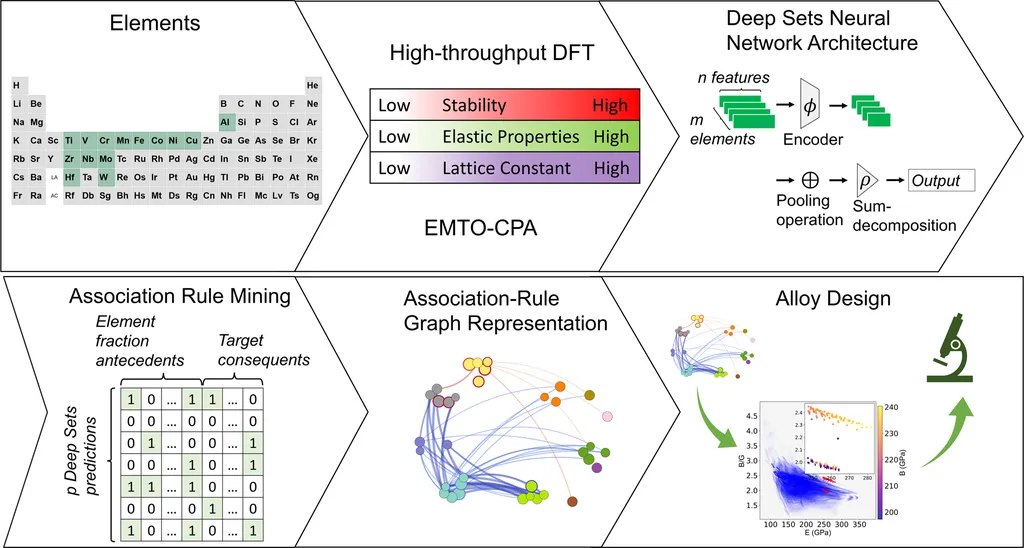In a groundbreaking development poised to revolutionize the energy sector, researchers have combined high-throughput calculations with machine learning to predict the elastic properties of refractory multi-principal element alloys (RMPEAs). This innovative approach, detailed in a study led by Chengchen Jin of the Materials Genome Institute at Yunnan University in China, promises to accelerate the design of advanced materials crucial for energy applications.
The traditional trial-and-error method for designing RMPEAs is notoriously inefficient, given the vast compositional design space and high experimental costs. “The absence of robust datasets has been a significant hurdle in leveraging machine learning for designing novel RMPEAs,” Jin explained. To overcome this challenge, the research team developed a data-driven framework that integrates high-throughput (HTP) calculations with machine learning, enabling the creation of a comprehensive dataset of 4,536 RMPEA compositions.
The study introduced a novel stacking ensemble regression algorithm that combines multilayer perceptron (MLP) and gradient boosting decision tree (GBDT). This algorithm achieved an impressive 92.9% accuracy in predicting the elastic properties of Ti-V-Nb-Ta alloys. Verification experiments confirmed the model’s accuracy and robustness, offering a cost-effective, efficient, and precise strategy for alloy design.
The implications for the energy sector are profound. Refractory alloys are essential for high-temperature applications, such as in gas turbines, nuclear reactors, and other energy generation and storage systems. The ability to rapidly and accurately predict the properties of these alloys can significantly reduce development time and costs, fostering innovation and improving the performance of energy infrastructure.
“This integration of HTP calculations and machine learning provides a powerful tool for advancing the development of RMPEAs,” Jin noted. The research, published in the journal *Materials Genome Engineering Advances* (translated from the original Chinese title), marks a significant step forward in materials science, offering a blueprint for future advancements in the field.
As the energy sector continues to evolve, the demand for advanced materials that can withstand extreme conditions grows ever more critical. This research not only addresses current challenges but also paves the way for future breakthroughs, potentially reshaping the landscape of materials design and energy technology.

